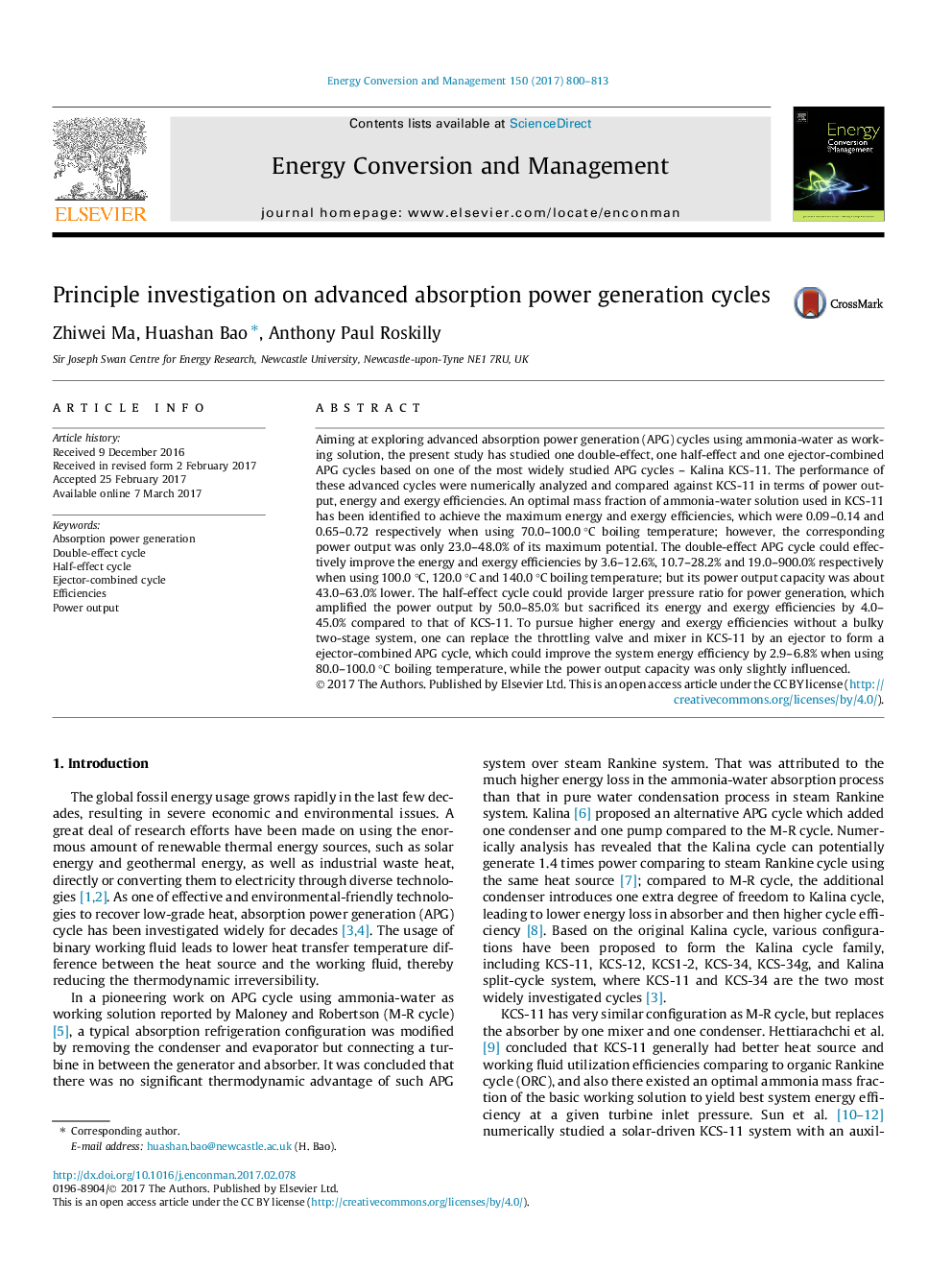| کد مقاله | کد نشریه | سال انتشار | مقاله انگلیسی | نسخه تمام متن |
|---|---|---|---|---|
| 5012286 | 1462812 | 2017 | 14 صفحه PDF | دانلود رایگان |
- Explored advanced absorption power generation cycles using ammonia-water as working solution.
- One double-effect, one half-effect and one ejector-combined advanced APG cycles were studied.
- Double-effect APG cycle can largely improve the efficiencies but its power output capacity was lower.
- Half-effect APG cycle had larger power output capacity but compromised its efficiencies.
- Ejector-combined APG cycle can have tangible improvement on efficiencies without using a bulky system.
Aiming at exploring advanced absorption power generation (APG) cycles using ammonia-water as working solution, the present study has studied one double-effect, one half-effect and one ejector-combined APG cycles based on one of the most widely studied APG cycles - Kalina KCS-11. The performance of these advanced cycles were numerically analyzed and compared against KCS-11 in terms of power output, energy and exergy efficiencies. An optimal mass fraction of ammonia-water solution used in KCS-11 has been identified to achieve the maximum energy and exergy efficiencies, which were 0.09-0.14 and 0.65-0.72 respectively when using 70.0-100.0 °C boiling temperature; however, the corresponding power output was only 23.0-48.0% of its maximum potential. The double-effect APG cycle could effectively improve the energy and exergy efficiencies by 3.6-12.6%, 10.7-28.2% and 19.0-900.0% respectively when using 100.0 °C, 120.0 °C and 140.0 °C boiling temperature; but its power output capacity was about 43.0-63.0% lower. The half-effect cycle could provide larger pressure ratio for power generation, which amplified the power output by 50.0-85.0% but sacrificed its energy and exergy efficiencies by 4.0-45.0% compared to that of KCS-11. To pursue higher energy and exergy efficiencies without a bulky two-stage system, one can replace the throttling valve and mixer in KCS-11 by an ejector to form a ejector-combined APG cycle, which could improve the system energy efficiency by 2.9-6.8% when using 80.0-100.0 °C boiling temperature, while the power output capacity was only slightly influenced.
Journal: Energy Conversion and Management - Volume 150, 15 October 2017, Pages 800-813
